
The Green Peace Corps intends to breed well cared for miniature livestock that are holistically pasteurized in rotation including varieties of miniature grass-fed cows, goats, sheep, pigs, llamas, horses, mules, and donkeys. These miniatures as well as full-sized alpacas (which are still small) and large exotic birds, all varieties of poultry, and rabbits and other small farm animals with considerably less environmental impact to provide cheese and dairy, eggs, fertilizer, hair, fiber, and many other products for our growing GPC farming communities.
Miniature cattle are continuing to gain in popularity as farm size continues to shrink. The smaller cattle breeds are particularly well suited for these small acreage farms for several reasons.
At last count there are twenty-six breed categories of miniature cattle in the International Miniature Cattle Breeds Registry. Miniature cattle are either selected reproductions of the older animals or are a result of several crossbreed programs. These crossbreed programs have the advantage of creating heterocyst (higher performance levels) in their progeny. Whenever you cross one distinct breed with another the results can be an animal with outstanding performance characteristics.
Miniature cattle are easier on the land, equipment and facilities. The small animals don’t have the bulk to do much harm. Pastures seem to stay greener longer because these miniature cattle weigh less and their hooves are smaller. Equipment maintenance costs less and it doesn’t need the heavy duty equipment.
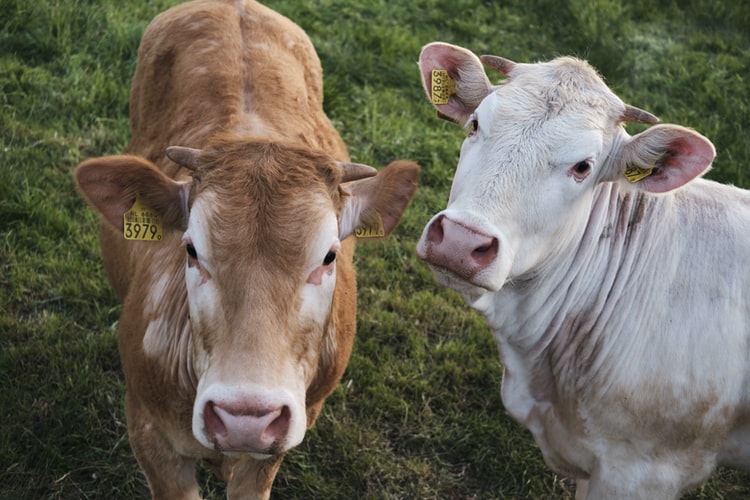
Families will love to participate in raising these smaller cute and gentle animals, that previous fell into a niche market for small amounts of food or as pets. Miniatures are simply more efficient and cost less to maintain-pound for pound. Normally miniatures are guarded by special breeds of large dogs, and full-sized donkeys and llamas all of which will protect them from two and four-legged predators.
These smaller cattle are 25% more efficient in terms of feed conversion than their larger counterparts and therefore eat much less pound for pound. About 1/3 of the feed is typical. Miniature cattle come closer to a family’s needs than large commercial cattle. Miniature cattle can also be a great investment and at the same time be helpmates with the grass and brush. They are also much less intimidating and easier to handle.
One of the best reasons for our organization wants to promote the breeding of these pet like miniatures is so that entire families can be involved in learning to raise and care for livestock. Children especially will learn important values that will stay with them throughout their lives by caring for and respecting animals. Most of today’s kids know little about the meat they eat other than it comes from a plastic covered package in the market, fast food restaurants or convenience stores.
Another and even more important reason to use miniatures is to gradually lessen the amount of meat consumed and often wasted in America. Smaller animals mean smaller cuts and smaller portions. Besides miniatures and smaller breeds are far more ecological.
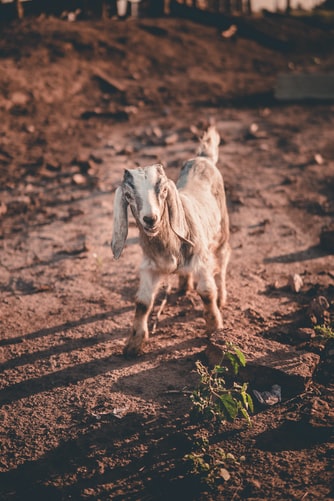
They come in many colors: white, black, red, cream and patterns such as buckskin (brown with a black cape over the head and neck along with other black markings) and chemise (similar to an Oberhasli goat), with or without white spots. Some have white “frosting” on the ears. Both the Nigerian Dwarf Goat Association and the American Goat Society websites feature pages that include color descriptions, disqualifying features and conformation. Although most are naturally horned, most breeders disbud them at a young age (usually less than 2 weeks of age) for safety to the goat, its herd mates, and human caregivers. Some Nigerian Dwarf goats have blue eyes, which is a dominant trait in goats.
Nigerian Dwarfs give a surprising quantity of milk for their size, up to two quarts a day. Since Nigerians breed year round, it is easy to stagger freshenings (births) in a herd so the entire herd is never dry. Thus, they are ideal milk goats for most families. Their milk has higher butterfat content than milk from full-sized dairy goats, usually about 5%, but going as high as 10% at the end of a lactation. This makes Nigerian Dwarf goat milk excellent for cheese and soap making.
Nigerian Dwarf goats are gentle and easily trainable. This, along with their small size and colorful appearance, makes them popular as pets. Some breeders bottle-feed kids, which makes them more bonded with humans. Others prefer to let their mothers raise them naturally, finding bottle-fed kids to be overly clingy. With either method, they can be very friendly and can easily be trained to walk on a leash and some enjoy coming into the house with their owners.
Nigerian dwarf goats’ small size also makes them excellent “visitor” animals for nursing homes and hospitals. Some goat supply houses even sell small harnesses and tiny wagons that fit Nigerian dwarf goats. As with all goats, does or neutered males (wethers) make the best pets, as bucks can have an objectionable odor. Nigerian Dwarfs, especially does and wethers, do well with children.
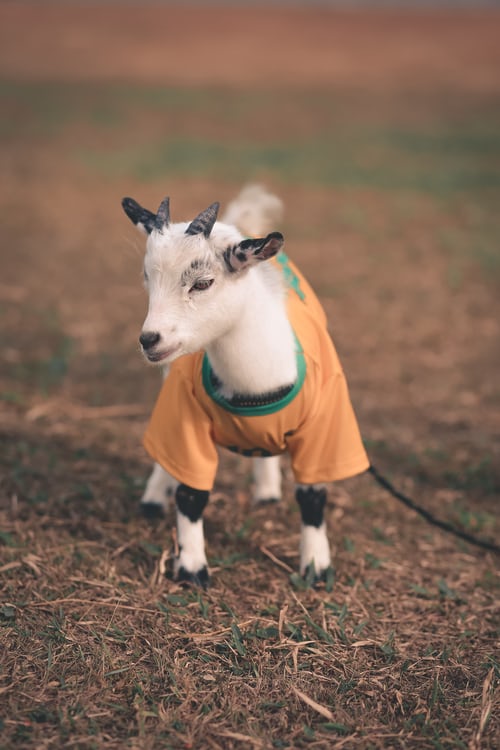
Miniature dairy goats have been reported to produce up to 3 quarts a day. Genetics and management will play an important part in milk production. Unlike many of the standard breeds, Nigerian Dwarfs breed year around which makes it easier to have a steady supply of milk throughout the year. Many of the miniature dairy goats are also year round breeders
Feeding and housing requirements for Pygmy goats are modest: a draft free 8′ x 10′ shed furnished with elevated sleeping and feeding places will accommodate four adult animals. An attached outside enclosure with at least 4′ high fencing will provide the fresh air and exercise these active, fun loving goats need. They are very sociable and are happier in a herd atmosphere or with another goat as a friend. A basic diet of roughage in the form of legume and grass hay, bark, brush, and dry leaves can be supplemented
The Mini-Dairy goats are between the sizes of the Nigerian Dwarf and the standard breed. Measured at the withers, the preferred maximum height is 28″ for does and twenty nine (29″) for bucks. The minimum height, twenty three inches (23″) for does and twenty four inches (24″) for bucks.
The Green Peace Corps is also aware that humane treatment of animals is essential to responsible meat production and consumption. A concerted effort will be made to reestablish a 4-H club style dedicated to promoting farming and animal husbandry to ordinary citizens. The Green Peace Corps believes that the current industrialized processing methods used by corporate meat producers is fundamentally flawed, with abusive animal treatment resulting in a multitude of diseases and bacterial infections that directly affect consumers. The fundamental principles of the Green Peace Corps will allow livestock to graze and grow naturally. This will result in lowered fat contents and increased nutrient counts in our dairy and meat protein. Farm animals will also be raised according to the organic standards, free of hormones and excessive antibiotics. Effective Microorganisms (EM) or other microorganism technologies may be used additionally to raise healthier animals, which can drastically reduce the use of veterinary services.
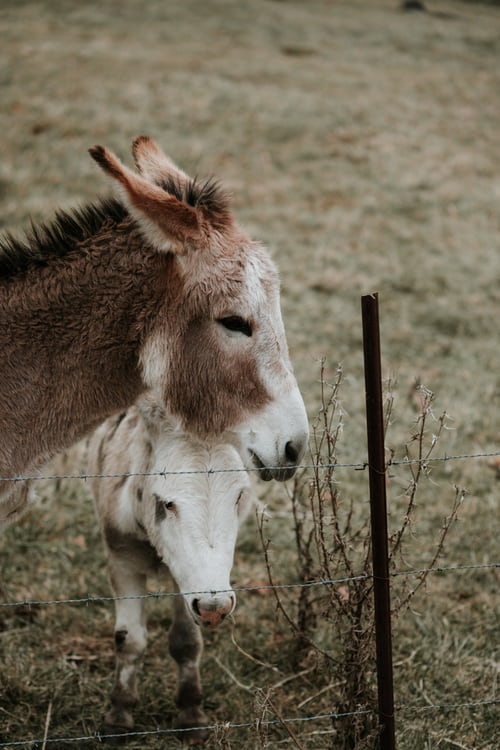
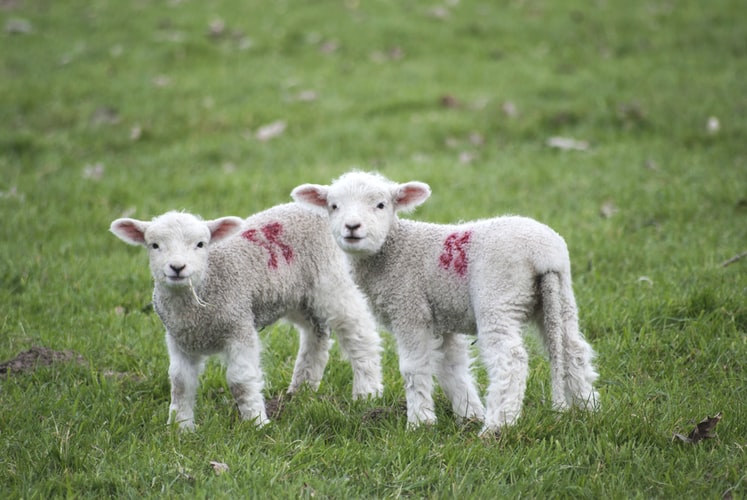
A solitary animal just does not do as well as two or three together. With the small breeds it’s possible to put two or three animals in the same area that you might put just one large animal. This is much better for the animals.
More animals per acre are the key here because farmers can raise more animals in the same amount of space and beef production is two to three times as much. It takes about five acres to raise two large animals, depending where and on the pasture available. On the same area farmers could raise one or two animals per acre with one of the small cattle breeds. It doesn’t take a computer scientist to figure out total beef production per acre is much greater with the smaller cattle.
The world needs some animal protein although most of us need to learn to eat less, especially red meat. Livestock produces quality manure for fertilizer and compost, and help create fertile soil. Therefore the Green Peace Corps intends to breed miniature livestock organically with rotational holistic pasturing. These much smaller versions of popular breeds are eco-friendlier and pound for pound produce more dairy, food, and fiber although they eat less that their hormone and antibiotic associated larger cousins. The smaller cuts of meat will help reduce consumption and may help wean many consumers from eating too much meat.
The best part is they are cute and cuddly gentler animals and far less expensive to raise. They eat far less, and generally can be transported in hatchbacks, SUVs and smaller pickup truck. The equipment used, fencing, corrals, and shelters cost less on account of the smaller size saving money and labor.
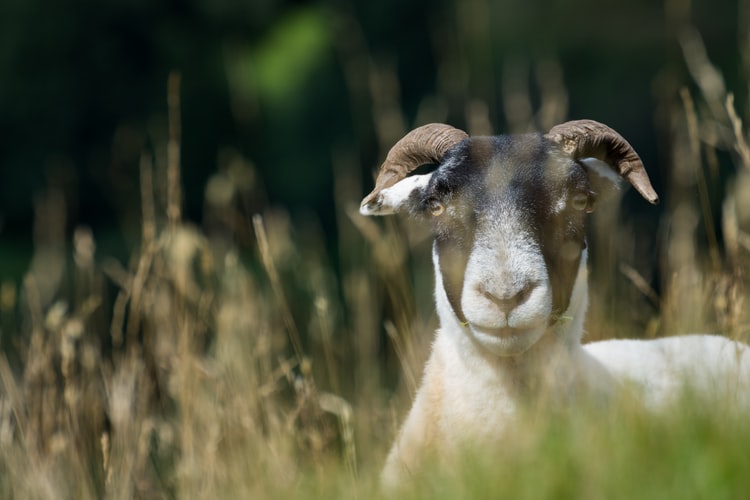
The Nigerian Dwarf Goat is a miniature goat of West Africa origin. Nigerian Dwarf goats are small in size and come in a variety of colors. Their small size means they do not require as much space as their larger dairy goat cousins. A healthy Nigerian Dwarf doe can produce up to two quarts a day in milk. The Nigerian Dwarf goat’s milk is higher in butterfat and protein than most other dairy goat breeds.
The Nigerian Dwarf goat is a miniature dairy goat breed of West African ancestry. Originally brought to the United States on ships as food for large cats such as lions, the survivors originally lived in zoos. Nigerian Dwarf goats are popular as hobby goats due to their easy maintenance and small stature. Though, now it is considered a dairy goat breed, according to the show association ADGA.
There are two different height standards for the Nigerian Dwarf goat. The height standard maintained by the American Goat Society and the American Dairy Goat Association requires does to be less than 22.5 inches (57 cm) at the withers, and bucks to be less than 23.5 inches (60 cm) at the withers. The Nigerian Dwarf Goat Association states does should ideally be 17–19 inches (43–48 cm) in height, with a maximum allowed height of 21 inches (53 cm), and bucks should ideally be 19–21 inches (48–53 cm), with a maximum allowed height of 21 inches (53 cm).
Food costs are rising and a mini dairy goat can often produce 2/3’s the amount of dairy than a standard goat while consuming 1/2 as much feed.
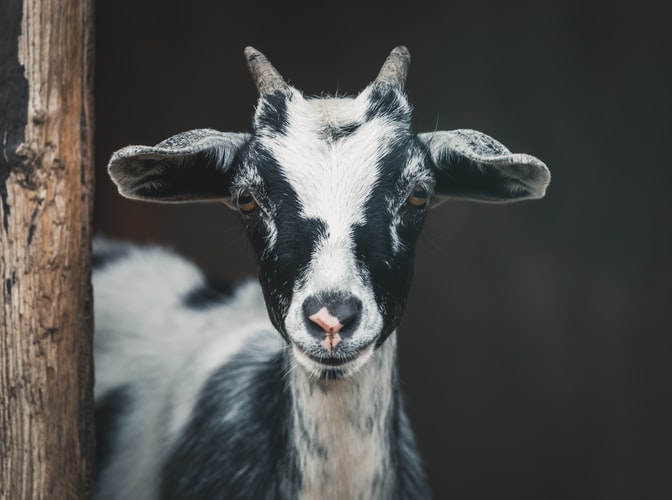
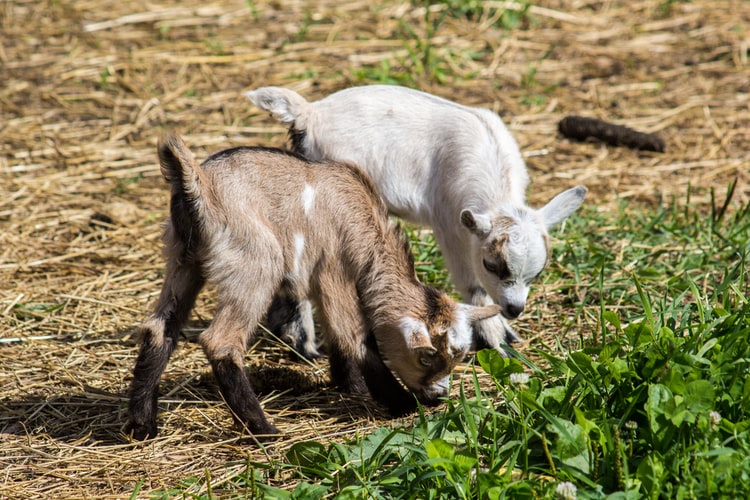
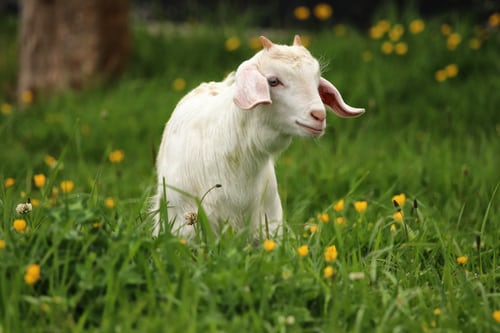
The Pygmy Goat is hardy, alert and animated, good-natured and gregarious; a docile, responsive pet, a cooperative provider of milk, and an ecologically effective browser. The Pygmy goat is an asset in a wide variety of settings, and can adapt to virtually all climates.
Pygmy goats are precocious breeders, bearing one to four young every nine to twelve months after a five month gestation period. Does are usually bred for the first time at about twelve to eighteen months, although they may conceive as early as two months if care is not taken to separate them early from bucklings. Newborn goats will nurse almost immediately, begin eating grain and roughage within a week, and are weaned by three months of age.
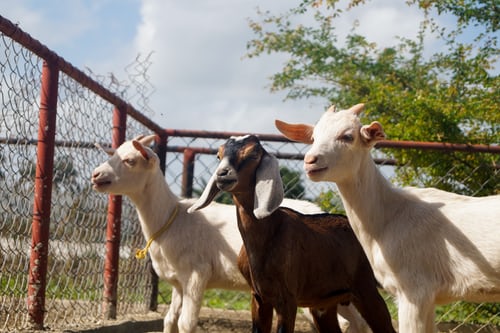
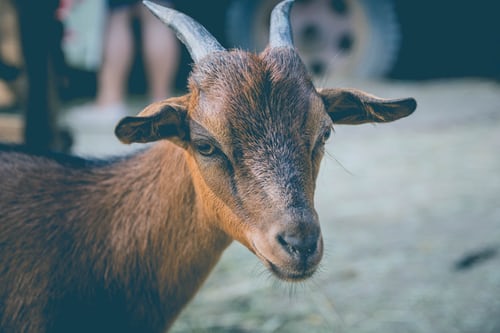

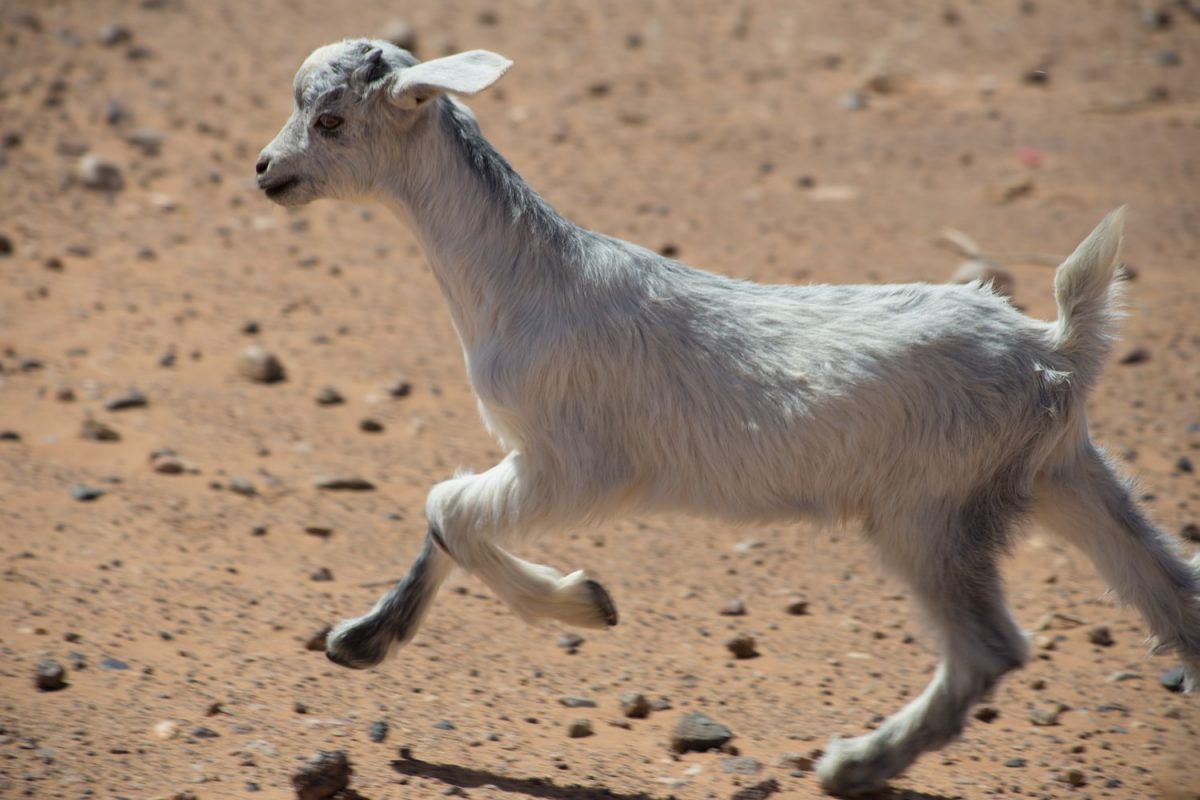
2 replies on “Miniature Livestock”
This cattle sure look like goats, but what the heck do I know.
HA HA THANKS TOM!